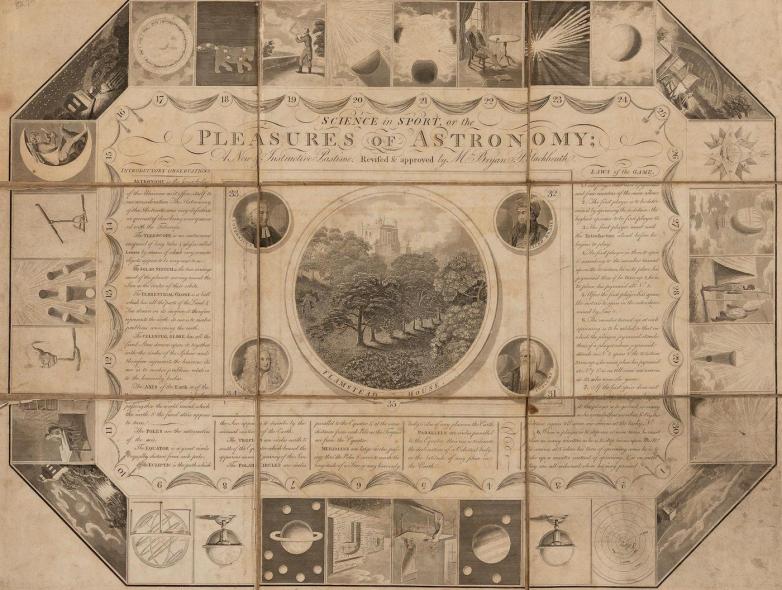Rare Books &c. at Auction This Week

An 1804 "game of the goose" board, Science in Sport, or the Pleasures of Astronomy, offered at Doyle this week.
The sales I'll be watching this week feature Bill Reese's Herman Melville collection, books from the Collection of Jay I. Kislak, and more.
On Tuesday, September 13, Éditions Originales du XIXe au XXIe Siècle, at ALDE. The 354 lots include a twenty-volume complete works of Balzac (1842–1855), estimated at €5,000–6,000, as is Eugène Sue's Le Juif Errant (1844–1845). A signed copy of the first Paris edition of Hugo's Les Misérables (1862) is expected to sell for €2,000–3,000.
The Christie's online sale of The Herman Melville Collection of William S. Reese ends on Wednesday, September 14. Among the 100 lots are a presentation copy of Typee (1865) to Henry A. Smythe, who got Melville his post at the New York Customs Office ($120,000–180,000). Melville's heavily-annotated copy of Dante's works is expected to sell for $100,000–150,000. First editions of Melville's John Marr and Other Sailors (1888) and Timoleon (1891) are each estimated at $80,000–120,000. Both are known in just 19 extant copies. The former is the H. Bradley Martin copy and the only known copy in private hands. As with the earlier Reese sales, basically every lot in this sale is worthy of mention here, so do go have a look through the catalog.
At Forum Auctions on Thursday, September 15, Books and Works on Paper, in 267 lots. A 1644 edition of Bede's Historiae Ecclesiasticae Gentis Anglorum rates the top estimate at £2,000–3,000. Charles Booth's four-part 1889 Descriptive Map of London Poverty could sell for £1,000–1,500, and John Ogilby's 1670 Africa is estimated at £600–800, as is an imperfect copy of Hakluyt's 1589 Principall Navigations.
Part II of the Doyle New York sale of the Collection of Jay I. Kislak sold to benefit the Kislak Family Foundation closes on Thursday. The 326 items include a large collection of correspondence between George Santayana and his Harvard classmate Herbert Lyman ($5,000–8,000); two "tribute albums" presented to wounded American serviceman Lawrence R. Kelly after WWII ($4,000–6,000); and an 1804 game board intended to teach astronomy, approved by Mrs. Margaret Bryan ($1,500–2,000).















